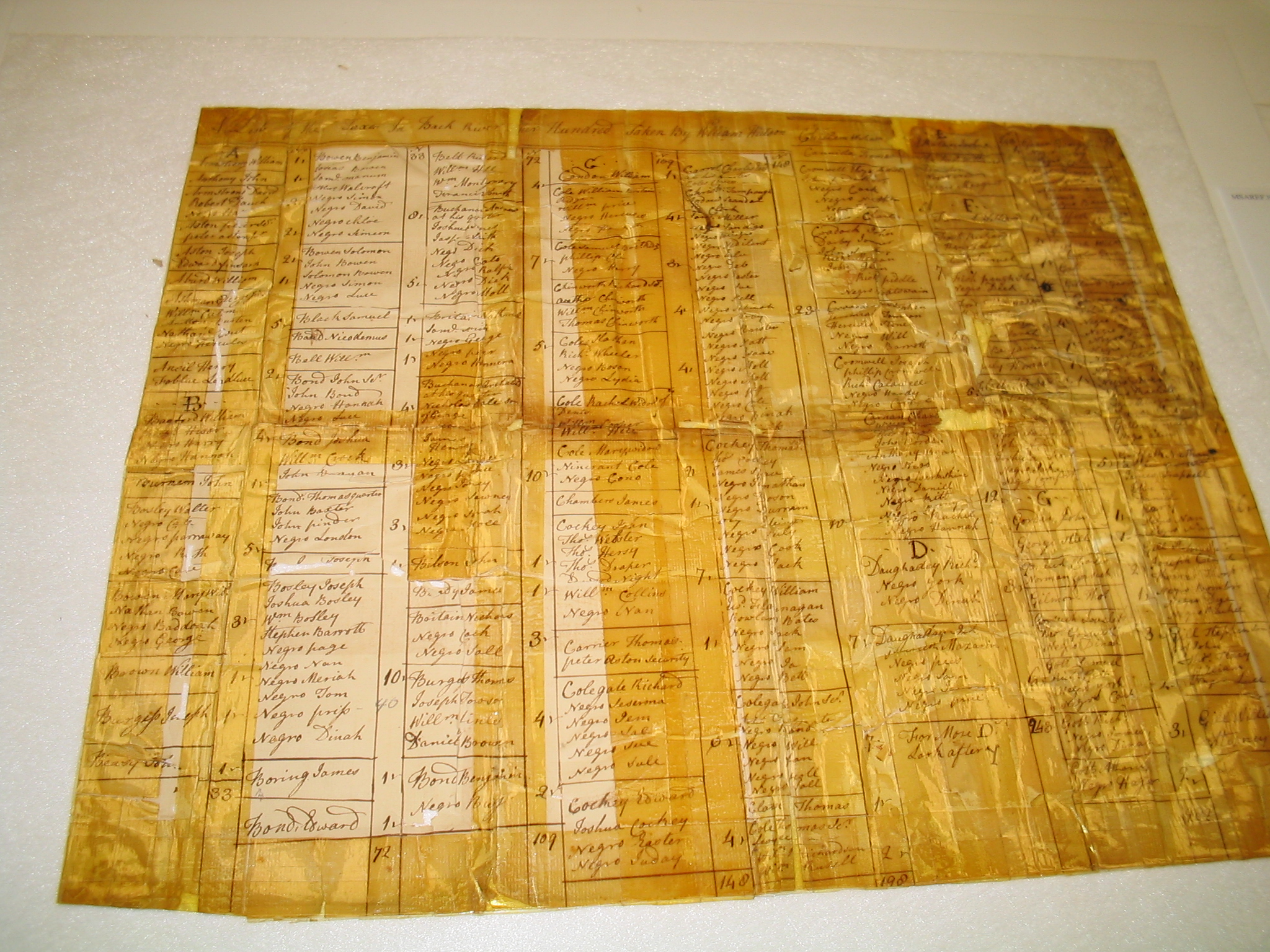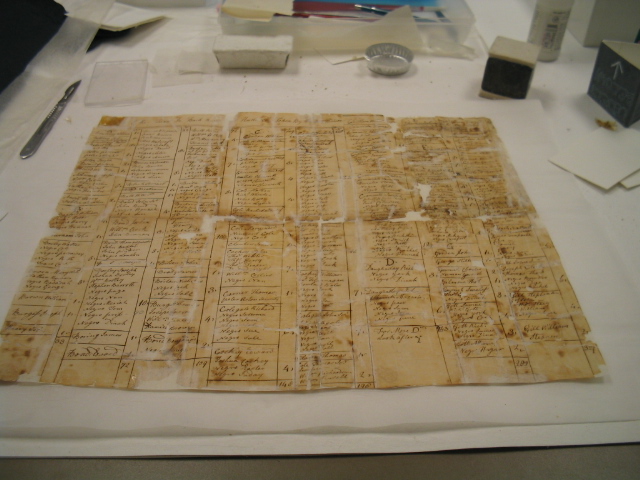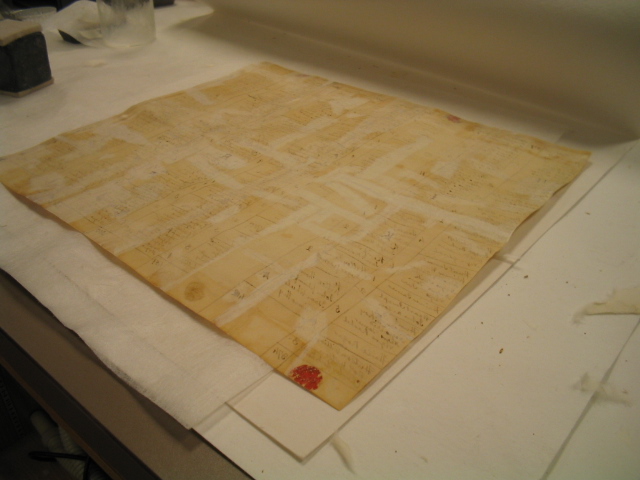|
|
Tape is Never the Answer!Why is tape bad for documents?Question: What kind of tape is okay to use? In as little as six months, a piece of tape causes damage that is irreversible. Tape Removal ProcessDamage resulting from tape is some of the most difficult to reverse.
It can involve the use of carcinogenic
chemical solvents, like acetone, tolulene, and hexane.
But wait! Recently, the Conservation Lab acquired a Preservation Pencil that greatly reduces the amount of time and effort involved in removing most types of tape. However, tape removal is still a very time intensive and delicate process. Everyone on the Conservation staff would much rather that no tape were used at all. 

 Without the aid of the Preservation Pencil, the removal of that amount of tape would have been too time intensive to attempt. With the help of the Pencil, we were able to remove the majority of the tape without losing vital information. 
 Removing tape with the pencil still takes a great deal of patience. Particularly, because the area of paper covered by the tape degrades even faster than the rest of the document, making removal of the tape a very delicate process. The four photos above show the extensive amounts of tape dealt with and what the documents looked like after they had been repaired. 
 Another problem with tape removal is that often the paper under the tape is eaten away, almost entirely. These are more photos of the tax records, both before and after repair. This particular document had its tape removed with the aid of solvents several years before the paper mending was attempted. The document was left in shards and had to be put back together again like a jig-saw puzzle. 
 Once all the tape is gone, there is still a great deal of adhesive left behind. There are a number of ways to remove the adhesive, depending on the type of document, strength of the paper, and nature of the ink. They include a solvent bath, swabbing with solvents, or using a special eraser. Once the adhesive is removed the document must still be mended, either using Japanese tissue and wheat starch paste or heat-set tissue. 
Here is the document that was shown in pieces above, at the end of the mending process. 
This is the other side of the same document, showing the number of mends that had to be used to recreate the whole page All documents from MSA SC 5458-48-716, MSA SC 5458-48-717, and MSA SC 5458-48-641.
|
Mainpage
 Removing tape requires
tremendous amounts of time and patience. To remove the tape,
documents are first "bathed"in a solution of acetone and ethanol,
requiring the conservator to work in a fume hood and wear a respirator and
gloves at all times. Then the conservator must carefully peel away at the tape with mini-spatulas. Now the tape has been
removed, but the adhesive remains on the paper. To remove the adhesive the conservator must gently rub the document with
swabs while it is still in the solvent bath. On average, it takes 3 hours to reverse the damage caused by one inch of tape.
Removing tape requires
tremendous amounts of time and patience. To remove the tape,
documents are first "bathed"in a solution of acetone and ethanol,
requiring the conservator to work in a fume hood and wear a respirator and
gloves at all times. Then the conservator must carefully peel away at the tape with mini-spatulas. Now the tape has been
removed, but the adhesive remains on the paper. To remove the adhesive the conservator must gently rub the document with
swabs while it is still in the solvent bath. On average, it takes 3 hours to reverse the damage caused by one inch of tape.